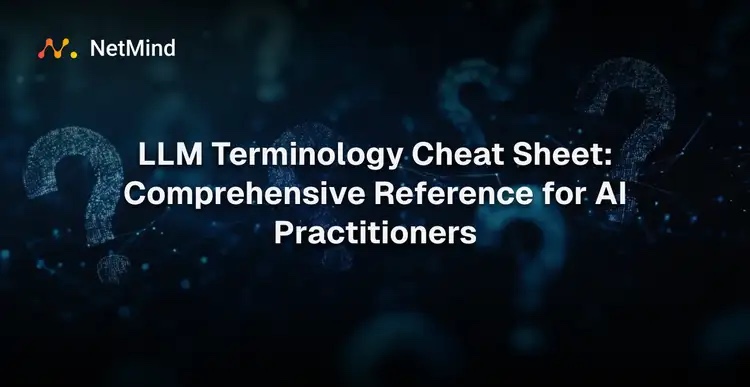LLM Terminology Cheat Sheet: Comprehensive Reference for AI Practitioners

The guide distills the essential jargon of large language model (LLM) research and engineering into a single, accessible reference. It covers the full spectrum of concepts practitioners encounter—from model architectures and core components to training strategies, fine-tuning methods, and evaluation benchmarks—providing precise definitions to help navigate research papers, documentation, and performance reports.
Key Coverage Areas
-
Model Architectures & Types: Explains foundational designs like Transformer, encoder–decoder, and decoder-only architectures, plus notable models such as BERT, GPT, LLaMA, Qwen, and Mixture-of-Experts systems. Highlights their intended use cases (e.g., autoregressive generation, bidirectional encoding) and efficiency trade-offs.
-
Core Components & Mechanisms: Breaks down attention mechanisms (queries, keys, values), positional encodings (absolute, relative, RoPE), embeddings, transformer blocks, and quantization techniques (NF4, FP8). Includes LoRA and QLoRA for parameter-efficient fine-tuning, and retrieval-augmented methods.
-
Training & Fine-Tuning Strategies: Details pre-training objectives (MLM, NSP, span corruption), supervised fine-tuning, instruction tuning, RLHF/RLAIF, and parameter-efficient approaches like adapters, prefix tuning, and bias-only tuning. Covers alignment methods (PPO, DPO, RFT) and domain adaptation.
-
Evaluation & Benchmarks: Lists major benchmarks (GLUE, SuperGLUE, MMLU, GSM8K, HumanEval, TruthfulQA) and metrics (BLEU, ROUGE, F1, accuracy, pass@k). Addresses issues like data contamination, covariate shift, and bias measurement datasets (CrowS Pairs, RealToxicityPrompts).
-
Decoding & Inference: Defines decoding strategies (greedy, top-k, temperature sampling), efficiency measures (FLOPs per token), and optimization techniques (AdamW, cosine learning rate schedules, gradient clipping).
-
Specialized Concepts: Includes domain-specific datasets, reasoning capabilities, external tool use (Toolformer, WebGPT), and safety/alignment considerations.
Why It is Useful?
By consolidating hundreds of technical terms into a structured, plain-language glossary, this cheat sheet serves as a quick-reference toolkit for AI practitioners helping them interpret model documentation, understand research claims, and compare systems on a like-for-like basis without getting lost in inconsistent or opaque terminology.
Read more at: blog.netmind.ai
2025-08-27